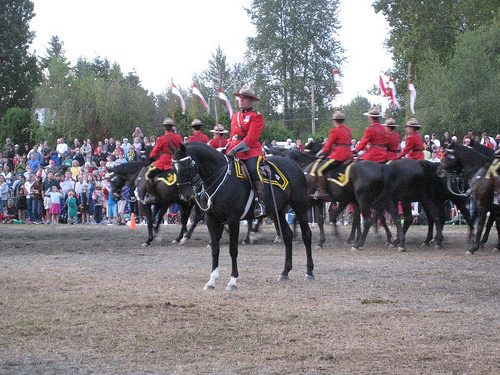By Emily Gorner (Contributor) – Email
Print Edition: February 27, 2013
Human Rights Watch recently published some heavy criticism of the RCMP’s relationship with aboriginal females in British Columbia. While the police force should be a source of safety and comfort, female citizens in northern British Columbia seem to experience only fear and distrust. A lack of attention given to cases of Canadian aboriginal women may give the impression of a situation that has become poisonous, but in reality, it is a product of a long history of abuse.
Since settling in Canada, colonists have had a hopelessly abusive relationship with aboriginal peoples, so entrenched in subordination that it is hard to see possibility for improvement. How can our country fix a situation that has such a firm foundation of assimilation, rather than cooperation? Many residents of cities such as Abbotsford remain unaware of persistent problems because in areas with a wider scope of public awareness, it’s so easy for inaction to slip by. Sometimes it is easy to forget that although we live in a so-called “developed” country, there are still areas that are relatively behind in legal and conceptual development.
However, in the isolated northern communities of our province, victims may feel alone, perhaps even blamed for their suffering. Improvement is far from finished when those in places of authority have the opportunity to pick and choose where their services are spent. Power is distributed in a way that allows this abuse to continue; it remains in the hands that have funding, and when we look at where the funding is held, it becomes clear why the voices of victims are not being heard. The government stopped funding to the Native Women’s Association of Canada’s (NWAC) program, Sisters in Spirit, which looked specifically at gender and ethnicity in investigations of homicide and missing persons. Since that cut in 2009, funding has continued to the NWAC’s “Evidence to Action” program. So, where is the catch? It lies in the fact that cases in the latter program are monitored by the RCMP itself. In a system where funding for investigation into abuse is allotted to those accused of abuse, there is clearly a conflict of interest.
We can see how the speed of justice is affected when we observe where money and awareness is given. For example, you would have a hard time finding a resident of the Fraser Valley who did not recognize the name Amanda Todd. When thousands dedicated their awareness, however briefly, to this girl, a trial was quick to follow. The voices of aboriginal women are going unheard because an environment of fear and neglect prevents them from even going so far as to file a police report. Even if a report is filed, it will be monitored by the RCMP, and under their jurisdiction there is no mandate for the collection of ethnicity data. The issue of social inequality can never be addressed when the system doesn’t acknowledge it.
Canadians like to pride themselves on multiculturalism. The dilemma of today’s aboriginal women is a reminder that we are far from a state of true equality.


